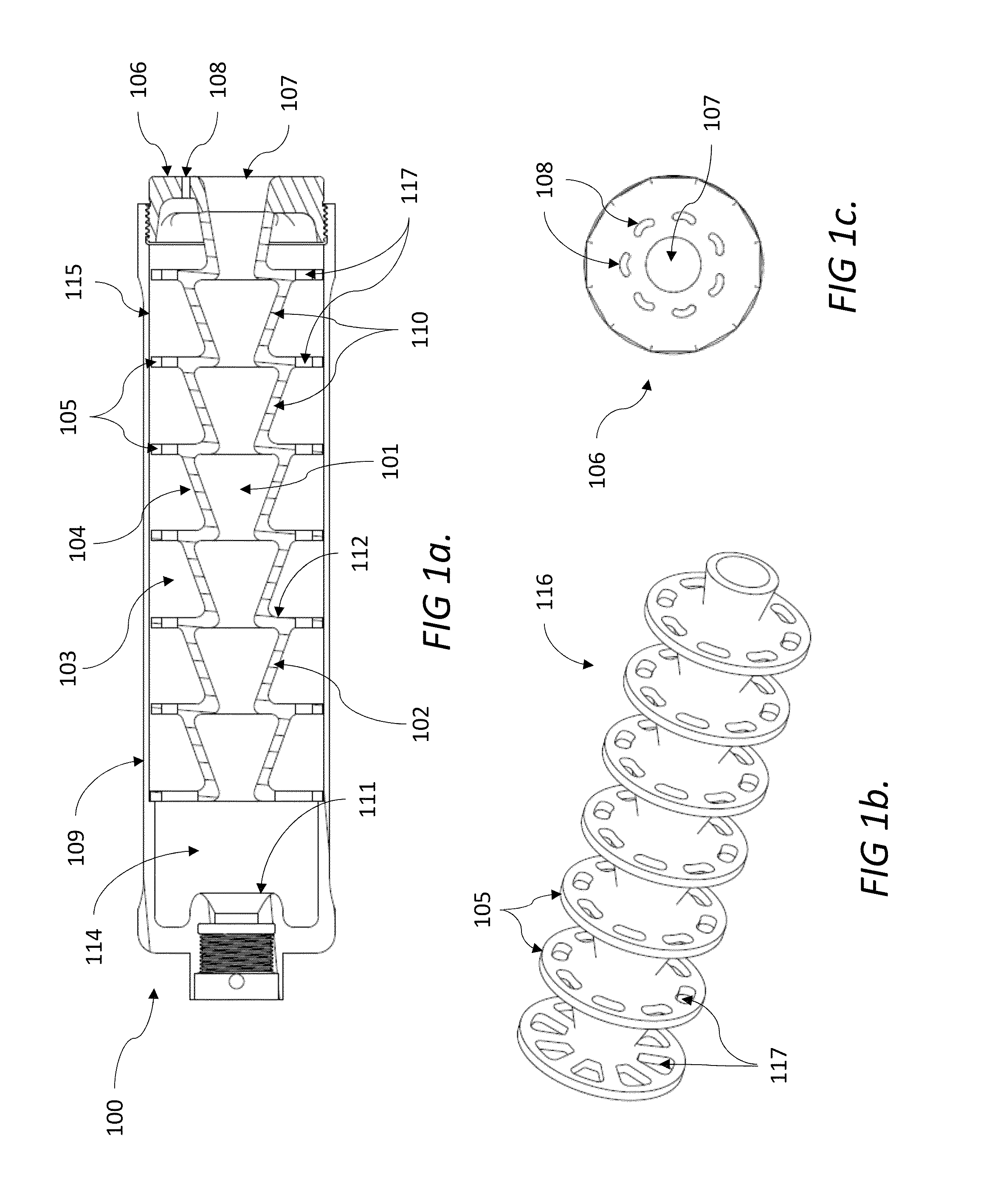Automatic weapon suppressor
a suppressor and automatic technology, applied in the direction of weapons, weapon components, etc., can solve the problems of slow blowdown, high pressure at the breech, and the typical baffle section of most suppressors does not allow rapid blowdown of weapons, so as to reduce heat transfer, reduce internal surface area, and reduce the effect of gas flow temperatur
- Summary
- Abstract
- Description
- Claims
- Application Information
AI Technical Summary
Benefits of technology
Problems solved by technology
Method used
Image
Examples
Embodiment Construction
[0040]Note that the terms ‘central chamber’, ‘core chamber’ and ‘central core chamber’ are used interchangeably.
[0041]As shown in FIG. 1a, suppressor [100] for automatic and semi-automatic weapons for rapid bleed down of weapon pressure, according to an embodiment of the subject invention, may include: a baffled central chamber [101], configured along the bore axis, formed by a series unported K-baffles [102]; a baffled bypass chamber [103], disposed surrounding the central chamber [101], providing a high flow area, forward directed flow path, wherein inner surface [104] of said bypass chamber [103] is substantially defined by the exterior shape of the unported K-baffle system [102] and which may further include a plurality of baffles [105, 113] such as annular rings or ported [117] partitions [105]. Propellant gasses may expand into the bypass chamber [103] before the central chamber [101] begins, and thereafter there is no fluid communication between the central [101] and bypass c...
PUM
 Login to View More
Login to View More Abstract
Description
Claims
Application Information
 Login to View More
Login to View More - R&D
- Intellectual Property
- Life Sciences
- Materials
- Tech Scout
- Unparalleled Data Quality
- Higher Quality Content
- 60% Fewer Hallucinations
Browse by: Latest US Patents, China's latest patents, Technical Efficacy Thesaurus, Application Domain, Technology Topic, Popular Technical Reports.
© 2025 PatSnap. All rights reserved.Legal|Privacy policy|Modern Slavery Act Transparency Statement|Sitemap|About US| Contact US: help@patsnap.com



